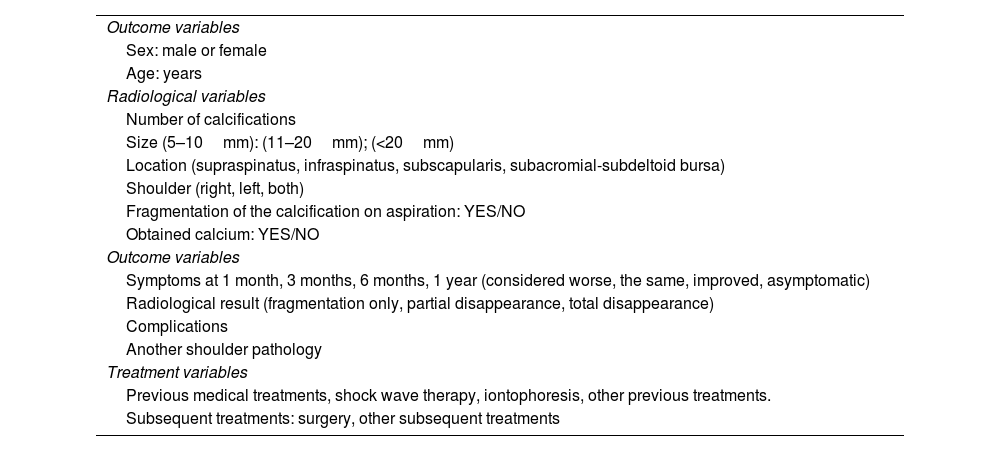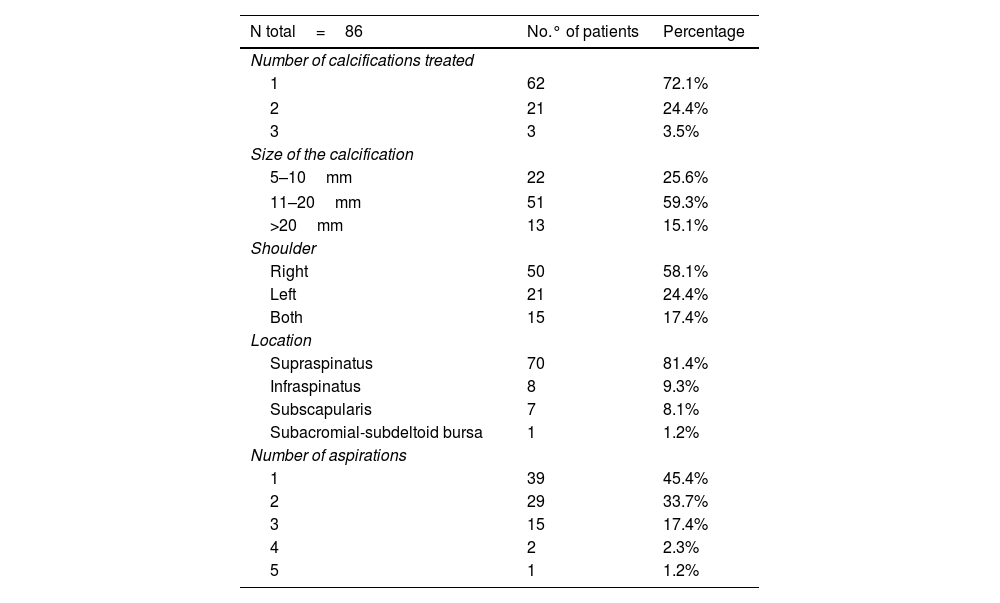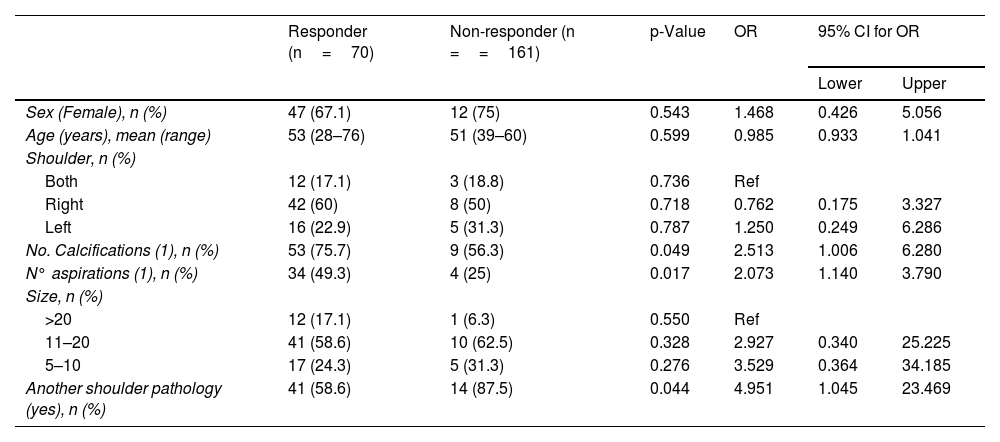
Supplement "Advances in Musculoskeletal Radiology"
Más datosCalcific tendinopathy of the rotator cuff is a common condition caused by the deposition of calcium crystals in the tendons of the rotator cuff. This study aimed to analyze the effectiveness of ultrasound-guided puncture and aspiration in calcific tendinopathy of the should in 86 patients treated at our center and to determine the factors associated with poor prognosis after this treatment.
Material and methodsThis retrospective descriptive study included 86 patients with calcific tendinopathy of the rotator cuff treated with ultrasound-guided puncture and aspiration between 2015 and 2019 for whom clinical and radiological variables were collected 1, 3, 6, and 12 months after the procedure.
ResultsOne year after treatment, 81.4% patients showed clinical improvement and 96.5% showed radiological improvement. Complications were observed in 34.9%; all complications were mild.
ConclusionsUltrasound-guided puncture and aspiration is an effective treatment for calcific tendinopathy of the shoulder, resulting in a high rate of clinical and radiological improvement and a low rate of minor complications. This technique has additional advantages, such as interaction with the patient and the lack of ionizing radiation.
La tendinopatía calcificante del manguito rotador es una patología frecuente producida por el depósito de cristales de calcio en los tendones del manguito rotador. El objetivo de nuestro estudio reside en analizar la efectividad de la técnica PAPE en la tendinopatía calcificante del hombro en 86 pacientes tratados nuestro centro y analizar los factores de mal pronóstico tras este tratamiento.
Material y métodosSe ha realizado un estudio descriptivo retrospectivo que incluyó a 86 pacientes con TCH tratados mediante PAPE desde 2015 a 2019, de los que se recogieron variables clínicas y radiológicas a los 1, 3, 6 y 12 meses de seguimiento.
ResultadosTras un año de seguimiento se observó mejoría clínica en el 81,4% de los pacientes y mejoría radiológica en el 96,5%, con una tasa de complicaciones de un 34,9%, todas ellas de carácter leve.
ConclusionesLa PAPE es un tratamiento efectivo para la tendinopatía calcificante del hombro, con una alta tasa de mejoría clínica y radiológica, y un bajo nivel de complicaciones leves, aportando además ventajas adicionales como la interacción con el paciente y el uso de radiaciones no ionizantes.
Artículo
Comprando el artículo el PDF del mismo podrá ser descargado
Precio 19,34 €
Comprar ahora











